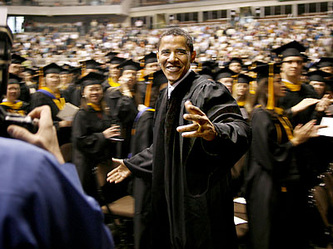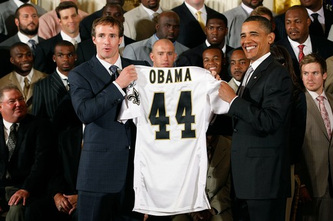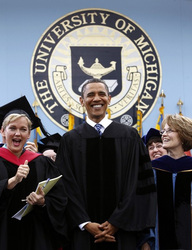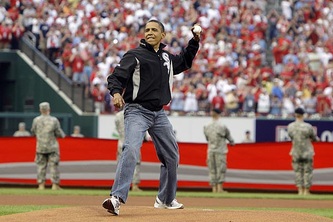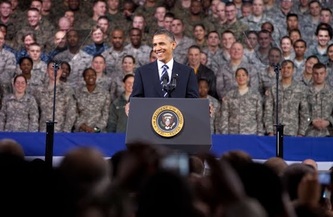What is the Executive Branch?
The Executive Branch is the part of government that enforces the laws. It includes mainly of the president and the president's staff.
Want to become president?
To become a president you must meet the following requirements;
- Must be at least 35 years of age
- Must be a natural born citizen
- Must be a US resident for 14 years
- Must be at least 35 years of age
- Must be a natural born citizen
- Must be a US resident for 14 years
"The Unwritten Rules"
This rules aren't requirements, however the candidates should meet the following;
- Should be a male
- Should be white
- Should have attending an Ivy League School
- Should be a protestant
- Should come from money
- Should be a male
- Should be white
- Should have attending an Ivy League School
- Should be a protestant
- Should come from money
Terms & Pay for the Presidency

- The Presidental term last 4 years
- A person can only run for presidency twice
- The president makes a salary of $400,000 a year
- A person can only run for presidency twice
- The president makes a salary of $400,000 a year
Roles of the President
Chief of State
The Chief of State doesn't mean that the President is the leader of his state. The title Chief of State means that the President is ceremonial head of the United States. Now what exactally does this mean? It means the President might speak at a graduation, or he might throw the first pitch at a baseball game. In the picture at the
Chief of Party
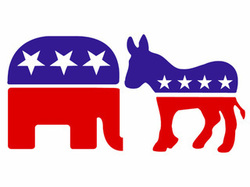
The role of Chief of Party means that the president is the head of his polital party, meaning that he is the most visable member of his party. He also is often used to raise money for his party.
Chief Diplomat
The presdient is the main respresentative of the United States to the rest of the world. He also can make an international agreement with another country, that does NOT need senate approval. So it has the atvanage of the power of speed.
Chief Citizen
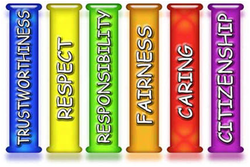
This role says that the president should embody every quality that a ciziten should have. Meaning that the presdient should be caring, kind, turstworthy, etc.
Cheif Legislator
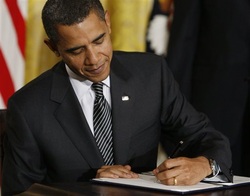
The president has influcene in making laws. The president has legislation options. He can do one of the following:
- Sign a bill into a law
- Veto a bill, which sends it back to congress
- Pocket veto
- Do nothing, which makes the bill into a law after 10 work days, just without his signature
- Sign a bill into a law
- Veto a bill, which sends it back to congress
- Pocket veto
- Do nothing, which makes the bill into a law after 10 work days, just without his signature
Commander in Chief
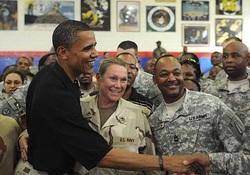
The president is the supreme commander of the United States military. He can send troops into another country with congress' approval within 60 days. However the president can NOT delcare war.
Chief Executive
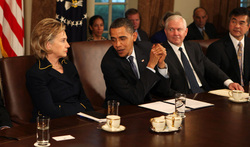
Obama with his cabinet
The president makes sure that all the treaties and laws of the United States are inforced. He also has appointing powers, meaning be can appoint people to the cabinet or to be federal judges.
Presidental Succession
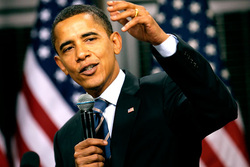
If the president is to die, resigns, or is unable to preform his ablities then the order of presidental succession goes as followed;
1. The Vice President
2. The Speaker of the House
3. The President Pro Tempore
4. The members of the caibent in the order from the oldest cabinet created, to the newest cabinet created
1. The Vice President
2. The Speaker of the House
3. The President Pro Tempore
4. The members of the caibent in the order from the oldest cabinet created, to the newest cabinet created
The Office of the Vice President
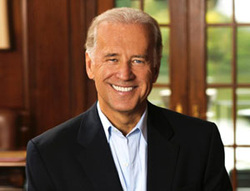
Current Vice President Joe Biden
Although in the past the Vice President did not have a lot of power, over the years the vice presiceny has gained more power. Below are a list of powers/responsiblities that the vice president has:
- He resides over the senate, meaning that if their was to be a 50/50 tie in the senate (which rarely happens), then the current vice president would vote to break that tie.
- To relpace the president if the die, resign, or are unable to perform their presidental duties. The vice president has replaced the presdient a total of 8 times in history.
- He resides over the senate, meaning that if their was to be a 50/50 tie in the senate (which rarely happens), then the current vice president would vote to break that tie.
- To relpace the president if the die, resign, or are unable to perform their presidental duties. The vice president has replaced the presdient a total of 8 times in history.
The Electoral College
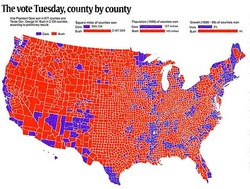
The electoral college is when you go in on election day you either vote for a republican or deocratic elector. Each state has as many electors as they do members. Members consist of the senate and the house together. To win the presidency you must have a majority of electctoral votes, meaning you need 270 out of 538 to win the presidency.
Arguements for the Electoral College
- The electoral college almost always works
- Changing it would bring about too many unknown changes
- It requires candidates to pay more attention to rural areas
- With a direct power popular vote candidates for president
- Changing it would bring about too many unknown changes
- It requires candidates to pay more attention to rural areas
- With a direct power popular vote candidates for president
Agruements against the Electoral College
- The electors don't always do what the people want them to do because they are anonymous and most are not required by law to follow the view of the people.
- If no one gets a majority of votes then the House decides the president and the Senate decides the vice president.
- A person may recieve more popular votes and yet win the majority of electoral votes and become president.
- This has happened only 4 times in history
- If no one gets a majority of votes then the House decides the president and the Senate decides the vice president.
- A person may recieve more popular votes and yet win the majority of electoral votes and become president.
- This has happened only 4 times in history
The Election of 1888
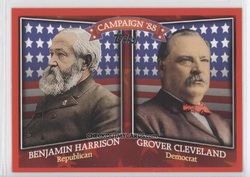
In the election of 1888 with Benjamin Harrison and Grover Cleveland. Cleveland won 5,534,488 popular votes, while Harrison won 5,443,892 votes. However, Harrison still won the election because he had 233 electoral votes and Cleveland won 16 electoral votes. This is an example of a flaw in the electoral college's system.
